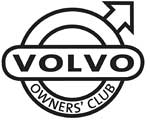

Photographs can be seen in our Volvo Gallery
Clean Inside Out
3 March 2003
Major progress towards a healthier environment in the passenger compartment
Volvo Car Corporation’s environmental work involves more than improving the environment for the surroundings and people outside the car. We also focus our development work on improving the environment for everyone travelling in the vehicle. Volvo cars have been developed according to the "clean inside and out" concept and are therefore equipped with a number of solutions that make them clean – inside and out.
At a time when many people are suffering from asthma and allergies, it’s quite natural for Volvo Car Corporation to offer their customers a good environment inside their cars as well as outside. Achieving this means using the right materials and cleaning the air that enters the vehicle via the air-conditioning system.
Certified textiles
The interior of a
Volvo is designed to be healthy and safe – even for people with contact
allergies and for asthma sufferers. Extreme attention has been given to
choosing environmentally-compatible materials. This means that they also fulfil
the requirements of the Oeko-Tex 100 ecological standard – a major advance
towards a healthier cabin environment.
Oeko-tex 100 is an
international environmental standard for textiles, which guarantees that the
materials contain no harmful substances.
Oeko-Tex certification
covers seat belts, carpets, thread and fabrics. Even the leather upholstery
undergoes chromium-free tanning with natural plant substances and meets the
requirements.
Other parts such as the handbrake button, load
eyelet and steering wheel emblem have been tested for contact allergies and
meet the requirements of the EU directive governing leakage of nickel from
parts with long-term skin contact, for example jewellery.
Cleaner air inside than outside
A Volvo
is designed to make the air inside the car as clean as possible for the
occupants. A cabin filter makes sure that dust, exhaust particles and pollen do
not enter via the ventilation system.
The customer can also choose to
equip the car with an air quality system, in which an electronic sensor
monitors the amount of air pollutants in the incoming air and closes the air
inlet if the levels go too high. A combined filter with active carbon
eliminates odour surges, for example from screenwasher liquid, petrol and
diesel exhaust fumes and oil.
The combination filter also makes sure
that the occupants are exposed to significantly lower levels of nitrogen
dioxide, ground-level ozone and hydrocarbons. So the air will be cleaner on the
inside than outside, for example in environments with heavy traffic such as
town centres, tunnels and holdups.
PremAir ®
Ground-level ozone is a
gas that is harmful to health. It may cause breathing difficulties and harm to
plants and animal life. Volvo Car Corporation was the first company in the
sector to introduce the PremAir ® – a coating on the radiator which
converts up to 75% of the ground-level ozone into oxygen as air passes though
the radiator when the car is driven. PremAir ® is standard on most engines.
The technology was developed by the American company Engelhard in collaboration
with Volvo Car Corporation.
Fuel consumption and emissions
Around
90% of the total environmental impact of a car happens when it is being driven.
A Volvo meets strict international environmental requirements and has low fuel
consumption to reduce the carbon dioxide emissions that contribute to the
greenhouse effect. Volvo cars are competitive in terms of fuel consumption in
their respective classes.
Volvo’s highly modern direct-injection
diesel engines provides a good fuel economy and carbon dioxide emissions about
20% lower than a petrol engine.
Volvo’s bi-fuel engines run on
natural gas/biogas or LPG (liquefied petroleum gas, butane or propane), with
petrol as the reserve fuel. Gas operation gives very low emissions; in
principle, driving on biogas make a zero net contribution to the greenhouse
effect. Add to this the low running costs of gas and your environmental choice
is rewarded in more than one way. Volvo’s engines can make your conscience
that little bit clearer.
Environmental Product Declaration makes it
easier to choose
Openness and objective information are important where
environmental issues are concerned. Volvo Car Corporation has a unique way of
doing this by means of its Environmental Product Declaration.
Every Volvo
car model has an eco-declaration. Volvo was the first car manufacturer in the
world to provide this. Volvo Car Corporation’s Environmental Product
Declaration is based on a holistic view, focused on the use of resources and on
ecological consequences. This gives the car purchaser an integrated picture of
the environmental impact of the car during its life, making it easier to do
environmental comparisons between different Volvo models and engine
options.
The Environmental Product Declaration is available at epd.volvocars.se
Legal | Privacy | Contact Us | Search | Site Map
Volvo Owners' Club Limited® 1962-2025

